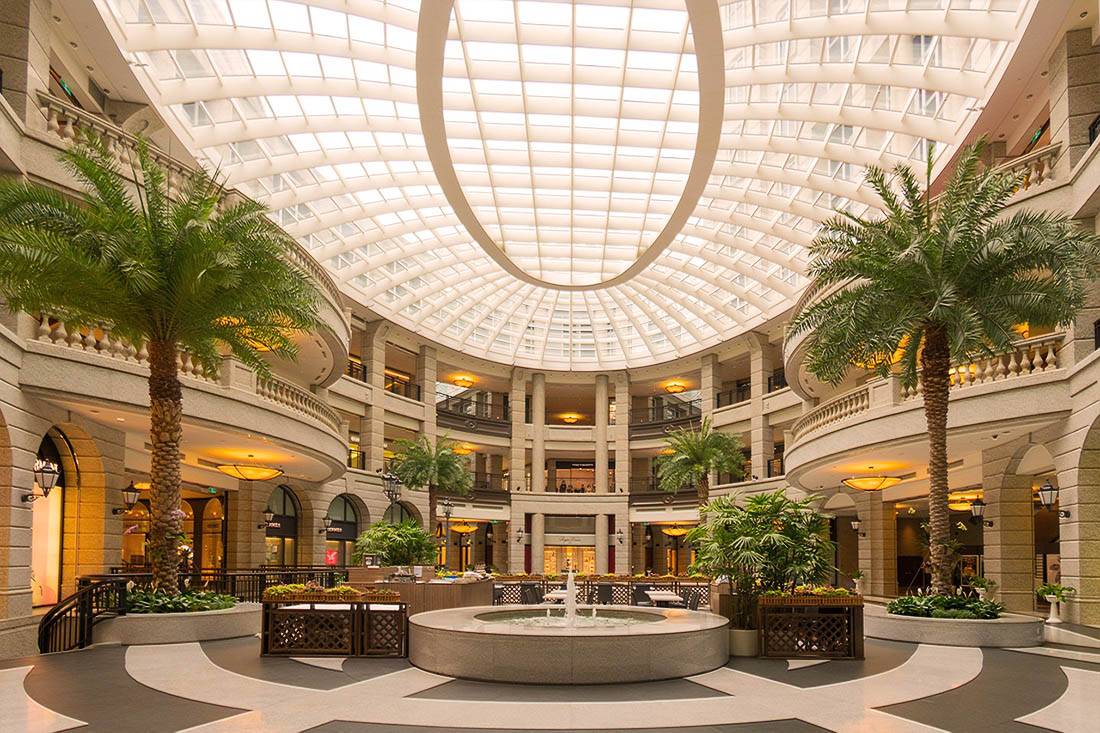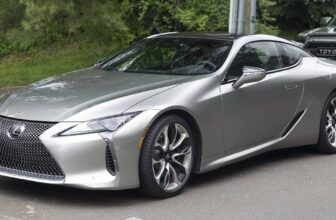
The Global Hotspots for Luxury Shopping
Where the World’s Elite Shop
Luxury shopping is not merely a transaction, it is an experience, a lifestyle statement, and often a journey to some of the most glamorous destinations across the globe. From iconic fashion capitals to hidden gems where elite boutiques thrive, the global map of luxury shopping is ever-evolving. For discerning travelers and style enthusiasts, understanding where to shop is just as important as knowing what to buy. In this guide, we’ll explore the world’s leading luxury shopping hotspots, uncovering why these destinations continue to attract high-net-worth individuals, fashion lovers, and curious travelers alike.
Why Luxury Shopping Is a Global Phenomenon
The allure of luxury is timeless. From handcrafted Italian leather to haute couture Parisian gowns, the world’s wealthiest consumers have always sought exclusive items that symbolize status, taste, and refinement. But luxury shopping has grown beyond individual purchases, it is now intertwined with tourism, lifestyle, and culture.
Tourism and luxury retail: Many international travelers plan entire trips around shopping. Airports and destinations report that luxury spending is one of the top reasons affluent tourists visit.
Cultural influence: Each region has its unique approach to luxury. Paris embodies timeless fashion; Milan emphasizes craftsmanship; Dubai showcases opulence; Tokyo thrives on innovation.
Exclusivity and experience: Shopping in luxury destinations is rarely about convenience. It is about personalized service, rare items, and unique retail environments that can’t be replicated online.
With this in mind, let’s explore the world’s most sought-after luxury shopping hotspots.
Paris: The Undisputed Capital of Haute Couture
When people think of luxury shopping, Paris is the first city that comes to mind. Often referred to as the fashion capital of the world, Paris is home to legendary fashion houses such as Chanel, Dior, Hermès, and Louis Vuitton.
Why Paris Stands Out:
Avenue des Champs-Élysées: Famous for its flagship stores, this avenue is synonymous with luxury shopping. From Louis Vuitton’s grand boutique to Cartier’s sparkling displays, it is a must-visit for any fashion enthusiast.
Avenue Montaigne and Rue du Faubourg Saint-Honoré: These prestigious streets house couture ateliers, where the world’s most exclusive designs are born.
Iconic department stores: Galleries Lafayette and Le Bon Marché are not just shopping centers but landmarks of Parisian elegance.
Paris is also home to Fashion Week, attracting global celebrities, designers, and style influencers. Shopping here is not simply retail, it’s immersion in the very heart of global luxury culture.
Milan: The Powerhouse of Italian Craftsmanship
Italy has long been celebrated for its fine craftsmanship, and Milan is at the epicenter of this tradition. The city blends old-world artisanal expertise with cutting-edge fashion trends.
Shopping Highlights in Milan:
Quadrilatero della Moda (Fashion Quadrilateral): This district, with streets like Via Montenapoleone and Via della Spiga, offers the most concentrated selection of luxury boutiques anywhere in the world.
Italian luxury brands: Milan is home to Prada, Gucci, Versace, Bottega Veneta, and Dolce & Gabbana. For many, buying these brands in their birthplace feels especially meaningful.
Personalized shopping experiences: Many Milanese boutiques offer private fittings and tailored services for elite customers.
Beyond shopping, Milan offers a cultural and culinary landscape that enhances the luxury experience, making it a city that blends art, heritage, and modern glamour.
Dubai: The Playground of Opulence
No city represents luxury on a grand scale quite like Dubai. Known for its futuristic skyline, lavish hotels, and extravagant lifestyle, Dubai has rapidly established itself as a global retail powerhouse.
Why Dubai Is Unique:
The Dubai Mall: One of the largest shopping centers in the world, it hosts flagship stores for every major luxury brand, often with exclusive collections.
Mall of the Emirates: Famous for its luxurious setting, complete with indoor skiing, fine dining, and a range of designer boutiques.
Tax-free shopping: Dubai is known for offering tax-free purchases, making it especially attractive to international shoppers.
Beyond traditional luxury fashion, Dubai’s markets also specialize in gold, fine jewelry, and precious stones, making it a hotspot for collectors and investors. Shopping here is as much about the spectacle as it is about the purchase.
New York City: The Intersection of Luxury and Modernity
New York City embodies fast-paced modern luxury with a distinctly American flair. It is a place where historic brands and contemporary designers coexist.
Key Luxury Destinations in New York:
Fifth Avenue: This iconic street is lined with the flagship stores of Tiffany & Co., Bergdorf Goodman, and Saks Fifth Avenue.
SoHo: Known for blending luxury with creativity, SoHo is home to boutique stores and experimental concepts from brands like Chanel and Dior.
Madison Avenue: Offers a quieter, more exclusive shopping experience, with elite boutiques and art galleries.
New York stands out for its ability to merge fashion, art, and culture. Many global luxury brands choose the city to launch their most innovative collections, catering to a diverse clientele.
London: Tradition Meets Cutting-Edge Style
London is a city where royal heritage and avant-garde fashion merge seamlessly. It offers a shopping experience that caters both to tradition and innovation.
London’s Luxury Highlights:
Bond Street and Mayfair: Home to Burberry, Alexander McQueen, and Harrods, symbols of quintessential British luxury.
Knightsbridge: The legendary Harrods and Harvey Nichols department stores attract millions of international shoppers.
Savile Row: Famous for bespoke tailoring, offering timeless craftsmanship in men’s fashion.
London’s multicultural character makes it a hub for both heritage brands and global influences, appealing to a wide spectrum of luxury consumers.
Tokyo: The Fusion of Innovation and Exclusivity
Tokyo is one of the most fascinating luxury shopping destinations due to its mix of tradition, futurism, and exclusivity. Japanese consumers are known for their passion for high-quality luxury goods, and global brands often create exclusive Japan-only collections.
Why Tokyo Is a Luxury Hotspot:
Ginza District: Known as Tokyo’s luxury hub, featuring flagship stores for Chanel, Bulgari, and Louis Vuitton.
Omotesando: Often compared to Paris’s Champs-Élysées, this street is lined with architecturally stunning boutiques.
Harajuku influence: While Harajuku is known for youth culture, its influence often spills into luxury, with brands blending street style with high fashion.
Tokyo’s unique blend of heritage craftsmanship (such as fine kimonos and artisanal goods) and cutting-edge luxury retail make it a global hotspot unlike any other.
Hong Kong: A Gateway for Asian Luxury
For decades, Hong Kong has been a key hub for luxury shopping in Asia. Its status as a global financial center has fueled demand for luxury goods among both locals and international visitors.
Hong Kong’s Luxury Highlights:
Canton Road: Lined with luxury boutiques including Gucci, Prada, and Louis Vuitton.
IFC Mall and Harbour City: Offer expansive luxury retail options with waterfront views.
Jewelry and Watches: Hong Kong is especially famous for high-end watches and jewelry, often attracting collectors worldwide.
Despite changes in global retail trends, Hong Kong remains a strategic luxury hub, bridging Western brands with Asian consumers.
Los Angeles: Where Luxury Meets Lifestyle
Unlike New York’s traditional luxury, Los Angeles blends high fashion with the laid-back glamour of Hollywood.
LA’s Shopping Destinations:
Rodeo Drive (Beverly Hills): Synonymous with Hollywood glamour, home to designer boutiques such as Gucci, Chanel, and Valentino.
Melrose Avenue: Combines luxury with creativity, appealing to a younger, trend-driven audience.
Westfield Century City: A modern luxury shopping center catering to a diverse clientele.
Los Angeles stands out for its celebrity culture, where many luxury trends are born and amplified through Hollywood’s influence.
Singapore: The Jewel of Southeast Asia
Singapore has established itself as a luxury retail paradise, attracting shoppers from across Asia and beyond.
Why Singapore Is a Hotspot:
Orchard Road: The city’s most famous shopping boulevard, lined with luxury malls and flagship stores.
Marina Bay Sands: A luxury shopping and entertainment complex that combines world-class retail with iconic architecture.
Duty-free advantage: Singapore’s international appeal is heightened by its tax-free policies for tourists.
The city’s reputation for cleanliness, safety, and efficiency enhances the luxury shopping experience, making it a favorite for affluent travelers.
Shanghai: The Rising Star of Luxury
Shanghai has become a powerhouse of luxury consumption, fueled by China’s growing high-net-worth population.
Key Luxury Destinations:
Nanjing Road: One of the world’s busiest shopping streets, offering both heritage and contemporary luxury.
Huaihai Road: Known for exclusive international brands.
Plaza 66 and IFC Mall: Home to flagship boutiques and ultra-luxury experiences.
Shanghai represents the future of luxury retail, with younger consumers driving trends and demanding more personalized, experiential shopping.
Emerging Luxury Hotspots
While the traditional luxury capitals dominate, several emerging destinations are gaining recognition:
Doha, Qatar: Combining luxury malls with Middle Eastern opulence.
Istanbul, Turkey: Bridging European and Asian luxury cultures.
Seoul, South Korea: Becoming a hub for luxury brands thanks to the global influence of K-pop and Korean entertainment.
These rising hotspots reflect how luxury shopping continues to expand globally, adapting to new cultures and consumer demands.
The Future of Luxury Shopping
Luxury shopping is evolving rapidly, shaped by technology, sustainability, and cultural shifts.
Experiential retail: Flagship stores are transforming into lifestyle destinations, offering immersive experiences beyond shopping.
Sustainable luxury: Consumers increasingly demand ethically sourced materials and eco-conscious brands.
Digital integration: While e-commerce grows, physical luxury shopping remains essential for exclusivity, service, and sensory experiences.
As the global luxury market expands, so too will the list of destinations that define the shopping habits of the wealthy and aspirational.
The world of luxury shopping is as diverse as it is glamorous. From Parisian couture houses to Dubai’s glittering malls, from Tokyo’s exclusive districts to New York’s iconic avenues, each global hotspot offers a distinct flavor of luxury. Whether you are a traveler seeking indulgence, a fashion enthusiast chasing exclusivity, or an investor in timeless pieces, these cities represent the very pinnacle of retail sophistication.
Luxury shopping is not about acquiring objects, it is about participating in a global culture of elegance, creativity, and prestige. As new destinations rise and established ones continue to evolve, the journey of luxury shopping remains an adventure that spans continents, cultures, and lifestyles.




